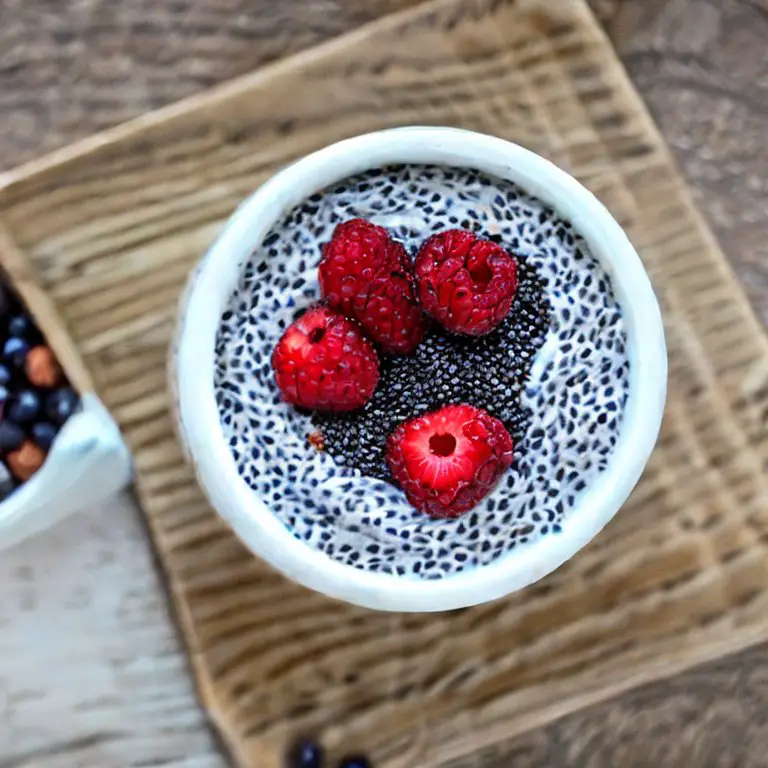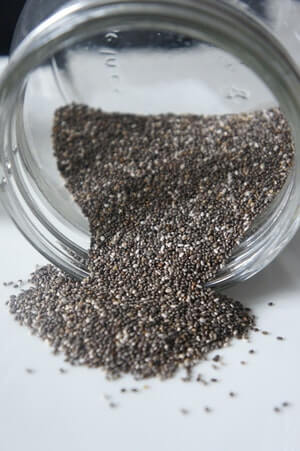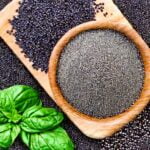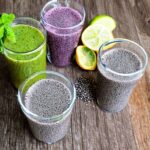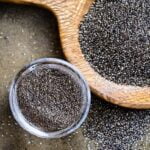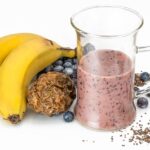Chia seeds are a nutritious and versatile food that can be easily incorporated into your diet in a variety of ways. One popular way to enjoy chia seeds is by adding them to yogurt, which is a quick and tasty way to boost the nutritional value of your snack or breakfast.
In this post, we will cover the materials needed to add chia seeds to yogurt, as well as the steps involved and some creative ideas for how to enjoy this tasty combination. Whether you’re a fan of sweet or savory flavors, there are endless ways to enjoy chia seed yogurt and reap the health benefits of these tiny seeds.
- Why Add Chia Seeds to Yogurt?
- Can You Eat Dry Chia Seeds in Yogurt?
- How to Eat Chia Seeds with Yogurt
- Chia Seeds with Yogurt for Weight Loss
- How Long to Soak Chia Seeds in Yogurt?
- Should I Soak Chia Seeds Before Adding to Yogurt?
- Final Thoughts
Why Add Chia Seeds to Yogurt?
Chia seeds are miniature powerhouses loaded with fiber, protein, and omega-3s, boasting a subtle nutty taste and crunchy texture. They enhance dishes in numerous ways and make a scrumptious and healthy addition to your diet.
One simple way to include chia seeds is by tossing them into your yogurt.
Can You Eat Dry Chia Seeds in Yogurt?
Tasty, crunchy, and packed with nutrients, chia seeds are an excellent addition to your yogurt. Whether you eat them dry or soaked, chia seeds bring a nutty flavor and crunch to your bowl of creamy goodness. Although dry chia seeds are perfectly safe to eat in yogurt and provide many of the same benefits, soaked chia seeds offer even more advantages, as they are more easily digested by the body.
Want to maximize the benefits of chia seeds in your yogurt? Try soaking them first. This way, they’ll provide all the benefits of soaked chia seeds without having to wait for them to soak in the yogurt. If you prefer, simply let the dry chia seeds sit in your yogurt long enough and they’ll naturally absorb the liquid and become more digestible.
Either way, you’ll be giving your yogurt a healthy and delicious boost.
(Learn more at Can You Eat Dry Chia Seeds in Yogurt?)
How to Eat Chia Seeds with Yogurt
Adding chia seeds to yogurt is a quick and easy way to boost the nutritional value of your snack or breakfast. It’s a great option for those looking to add more fiber, protein, and healthy fats to their diet, as chia seeds are a good source of all three. Plus, chia seeds are very low in calories, so you can enjoy them without worrying about overindulging.
To add chia seeds to yogurt, you’ll need a serving of plain or flavored yogurt (we recommend almond milk yogurt or coconut milk yogurt), and a small amount of chia seeds (1-2 tablespoons is a good starting point). You can also use a chia seed blend if you prefer.
Here’s how to add chia seeds to your yogurt:
- Scoop out a serving of yogurt into a bowl or container. You can use any type of yogurt that you like, such as Greek yogurt, regular yogurt, or plant-based yogurt.
- Measure out a small amount of chia seeds. You can start with 1-2 tablespoons and adjust the amount to your personal preference.
- Sprinkle the chia seeds on top of the yogurt, or mix them in. If you prefer a crunchier texture, you can leave the chia seeds on top. If you prefer a softer texture, you can mix the chia seeds into the yogurt.
- If you like, you can add other toppings to your chia seed yogurt, such as fruit, nuts, or granola. Fresh berries, sliced bananas, or diced apples are all great options. Chopped nuts, such as almonds, walnuts, or pecans, add a crunchy texture and a burst of flavor. And granola adds a bit of sweetness and crunch.
- Enjoy your chia seed yogurt as a snack or breakfast. You can eat it immediately, or let the chia seeds sit in the yogurt for a few minutes to allow them to soften.
There are endless ways to enjoy chia seed yogurt. You can eat it on its own, or use it as a topping for oats or pancakes. You can also use it as a base for smoothie bowls, or mix it with other ingredients to create a healthy parfait. Here are a few ideas to get you started:
- Chia seed yogurt with fresh berries: This is a classic combination that’s perfect for breakfast or a mid-morning snack. Simply top your chia seed yogurt with a handful of fresh berries, such as strawberries, raspberries, or blueberries. If you like, you can add a drizzle of honey or a sprinkle of granola for added sweetness and crunch.
- Chia seed yogurt with nuts and fruit: This combination is a bit more substantial and is great for a filling breakfast or lunch. Top your chia seed yogurt with a few tablespoons of chopped nuts (such as almonds, walnuts, or pecans), and a handful of diced fruit (such as apples, pears, or mango). You can also add a sprinkle of cinnamon or a drizzle of honey for added flavor.
- Chia seed yogurt with granola and fruit: This is a tasty and convenient option for a quick breakfast on the go. Simply layer your chia seed yogurt with granola and fruit on top.
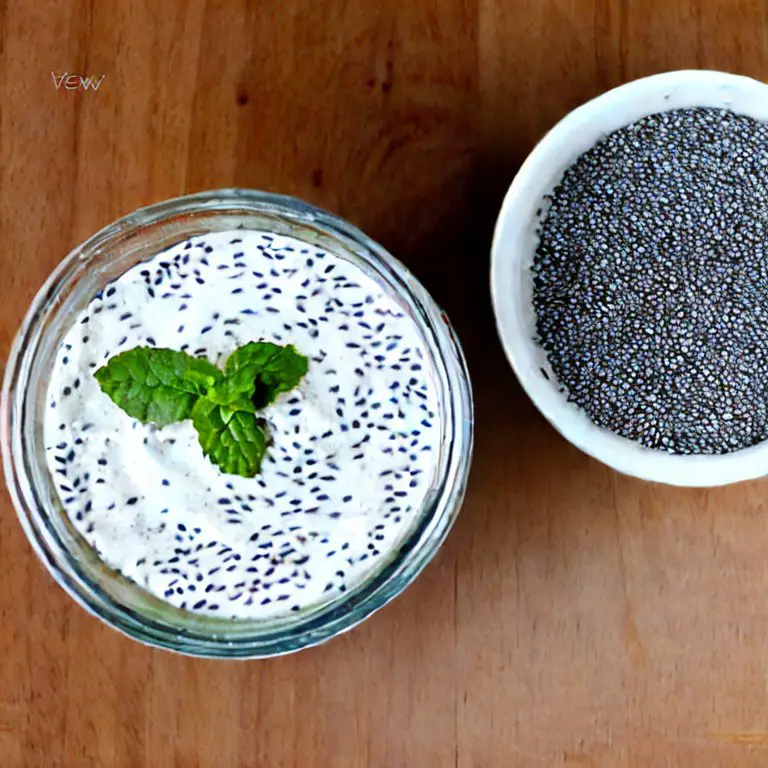
Chia Seeds with Yogurt for Weight Loss
Chia seeds, known for their high fiber and protein content, can be a useful ingredient in your weight loss journey. These tiny seeds are low in calories and metabolize slowly, keeping blood sugar levels stable, thereby reducing hunger pangs and cravings.
One easy way to include chia seeds in your diet is by mixing them into your yogurt. This can create a filling snack or breakfast, as yogurt already provides a good dose of protein. When you add chia seeds, you’ll be boosting the fiber and protein content, further aiding weight loss efforts.
While chia seeds can be beneficial, it’s important to remember that they aren’t a miracle solution for weight loss. Maintaining a calorie-controlled diet, regular exercise, and a balanced plate of whole, unprocessed foods are crucial factors in reaching weight loss goals.
How Long to Soak Chia Seeds in Yogurt?
It is not necessary to soak the chia seeds in the yogurt. If you soak them in the yogurt they will become softer and less crunchy as they absorb moisture from the yogurt. Otherwise, they will stay crunchy.
If you do decide to soak the chia seeds in the yogurt, you can soak them for as little as 15 minutes before they will start to soften. If you would like them to soften even more, you can leave them to soak for a couple of hours or overnight. (You can learn more at How Long to Soak Chia Seeds in Yogurt)
Should I Soak Chia Seeds Before Adding to Yogurt?
The choice to soak chia seeds before adding them to yogurt is entirely up to you. These tiny, soft seeds can be enjoyed either way and still provide plenty of nutritional benefits. Soaked chia seeds can help with digestion by absorbing water and expanding, making them tender. However, unsoaked seeds still have a crunchy texture that some people prefer.
If you opt for the soaking method, simply place the seeds in a bowl or jar, cover with water, and let them sit for 15-20 minutes. Once they have expanded and softened, drain any excess water and add to your yogurt. Just bear in mind that soaking will result in a loss of crunchiness.
In conclusion, both soaking and not soaking chia seeds are viable options when it comes to adding them to yogurt. It’s just a matter of personal taste, so go ahead and try both methods to find your favorite!
Final Thoughts
In conclusion, adding chia seeds to yogurt is a quick and easy way to boost the nutritional value of your snack or breakfast. Chia seeds are a good source of fiber, protein, and healthy fats, and are very low in calories, making them a healthy and tasty addition to any meal.
Whether you prefer a crunchy or softer texture, you can enjoy chia seeds in yogurt by sprinkling them on top or mixing them in. You can also experiment with different flavors and toppings, such as fruit, nuts, or granola, to create a variety of tasty and satisfying chia seed yogurt combinations.
Whether you choose to soak your chia seeds before adding them to yogurt or enjoy them dry, they are a nutritious and tasty addition to any meal.
Lance has been passionate about the plant-based diet and we have been following a whole food plant-based diet for over 5 years. We focus on health, natural healing, weight management, animal rights, and the health of the planet and environment by focusing on whole plant-based foods and sustainable practices.
Learn more at the About Me page and follow on social media at the links below.

